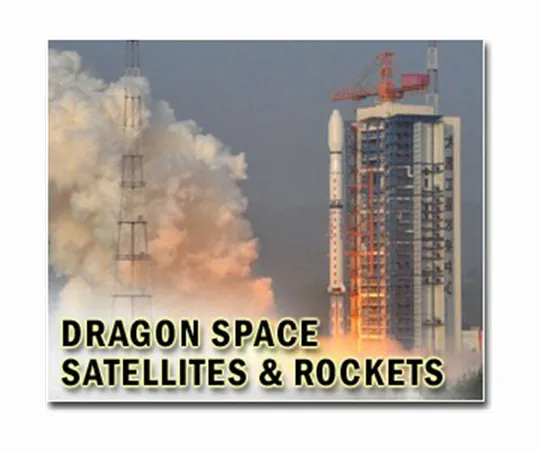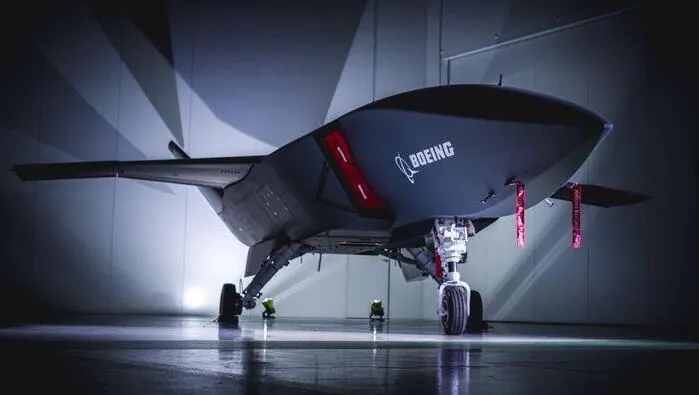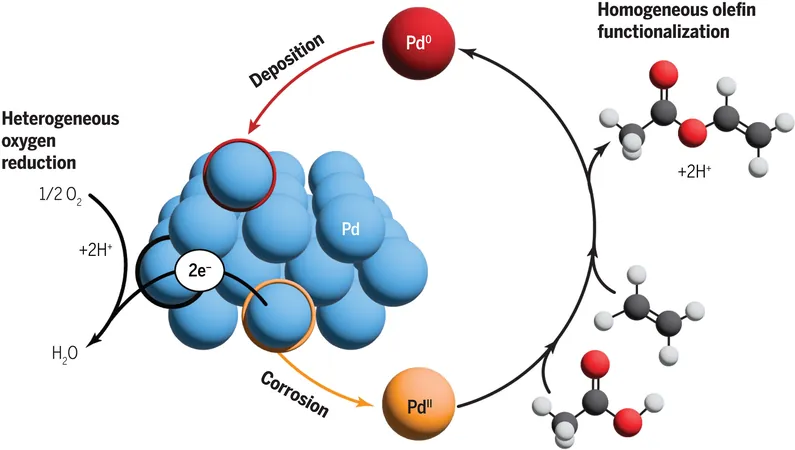
Revolutionary Advances in Muscle and Semiconductor Research from China's Space Station
2025-03-30
Author: Rajesh
In an astonishing blend of science and space exploration, researchers aboard China's space station are making groundbreaking strides in muscle health and semiconductor materials, harnessing the unique conditions of microgravity. As the reality of long-duration space missions looms, the health of astronauts becomes increasingly critical. Following a nine-month mission aboard the International Space Station, two NASA astronauts returned to Earth showing signs of significant muscle deterioration—a challenge that Chinese scientists are working diligently to tackle.
"Muscle atrophy poses serious health risks in the microgravity environment," shares Li Yuying, an associate researcher at the Shanghai Institute of Nutrition and Health with the Chinese Academy of Sciences. Her team has embarked on research that could not only improve astronaut wellness but also enhance treatments for muscle loss disorders on Earth.
Since the completion of China's space station, which began operations with the Tianhe core module in 2021 and the subsequent addition of the Wentian and Mengtian laboratories in 2022, extensive research opportunities have opened. Li's team shipped mouse muscle cell samples aboard the Tianzhou 5 to explore muscle behavior in space conditions, reporting a remarkable success in culturing and studying muscle cells in a weightless environment.
One of the significant breakthroughs was the identification of a gene associated with autophagy—the process through which cells recycle themselves, essential for combating muscle atrophy. "By utilizing a skeletal muscle cell autophagy fluorescence reporting system, we analyzed the impacts of microgravity on muscle cells, finding pathways that could lead to targeted therapies for both astronauts and patients suffering from muscle degeneration on Earth," explained Li.
The wider implication of this research could reshape how we approach muscle health, potentially leading to personalized drug regimens, nutrition plans, and fitness strategies for astronauts during long missions.
Gu Yidong, chief scientist at the China Manned Space Agency, expressed immense optimism for the scientific possibilities from ongoing research aboard the space station. "Over the next decade, we anticipate running more than 1,000 research projects that delve into various fields, including fundamental biology, biotechnology, and the very origin of life," he stated.
The state-of-the-art space station, enhanced with over 20 internal research cabinets and external platforms, is on track to launch significant equipment like the China Space Station Telescope, which aims to bolster international scientific collaboration.
So far, ambitious research has led to the creation of new rice varieties, breakthroughs in embryonic stem cell manipulation, and even the maintenance of the universe's longest running space-based aquatic ecosystem. With a commendable track record of 21 astronauts occupying the station through multiple missions, researchers have collectively generated an impressive pool of data with over 265 terabytes and obtained 150 patents.
Additionally, further reinforcing China's commitment to pioneering advancements in technology, Li's colleagues Liu Xuechao and Jin Min have focused on developing semiconductor materials in space. Liu touted the importance of semiconductor materials, which are foundational for everything from smart devices to renewable energy systems. He noted that growing Indium Selenide (InSe) crystals in the unique conditions of space avoids the environmental disturbances plaguing earthly growth methods, resulting in materials of higher purity.
"Our work with InSe crystals reveals their potential not just for electronics but also in next-gen applications like flexible devices," Liu commented. After 70 hours spent in the space station’s specialized materials science cabinet, they successfully obtained a defect-free crystal that highlighted new avenues for innovation in semiconductors, promising enhanced performance in transistors.
This research not only displays the boundless capabilities of human ingenuity but also reinforces the importance of continued investment in space exploration and its pivotal role in advancing science and technology. As these projects continue to unfold, the future is bright for both human health and technological evolution, potentially leading to commercial production of new materials that could change the industry entirely.






 Brasil (PT)
Brasil (PT)
 Canada (EN)
Canada (EN)
 Chile (ES)
Chile (ES)
 Česko (CS)
Česko (CS)
 대한민국 (KO)
대한민국 (KO)
 España (ES)
España (ES)
 France (FR)
France (FR)
 Hong Kong (EN)
Hong Kong (EN)
 Italia (IT)
Italia (IT)
 日本 (JA)
日本 (JA)
 Magyarország (HU)
Magyarország (HU)
 Norge (NO)
Norge (NO)
 Polska (PL)
Polska (PL)
 Schweiz (DE)
Schweiz (DE)
 Singapore (EN)
Singapore (EN)
 Sverige (SV)
Sverige (SV)
 Suomi (FI)
Suomi (FI)
 Türkiye (TR)
Türkiye (TR)
 الإمارات العربية المتحدة (AR)
الإمارات العربية المتحدة (AR)